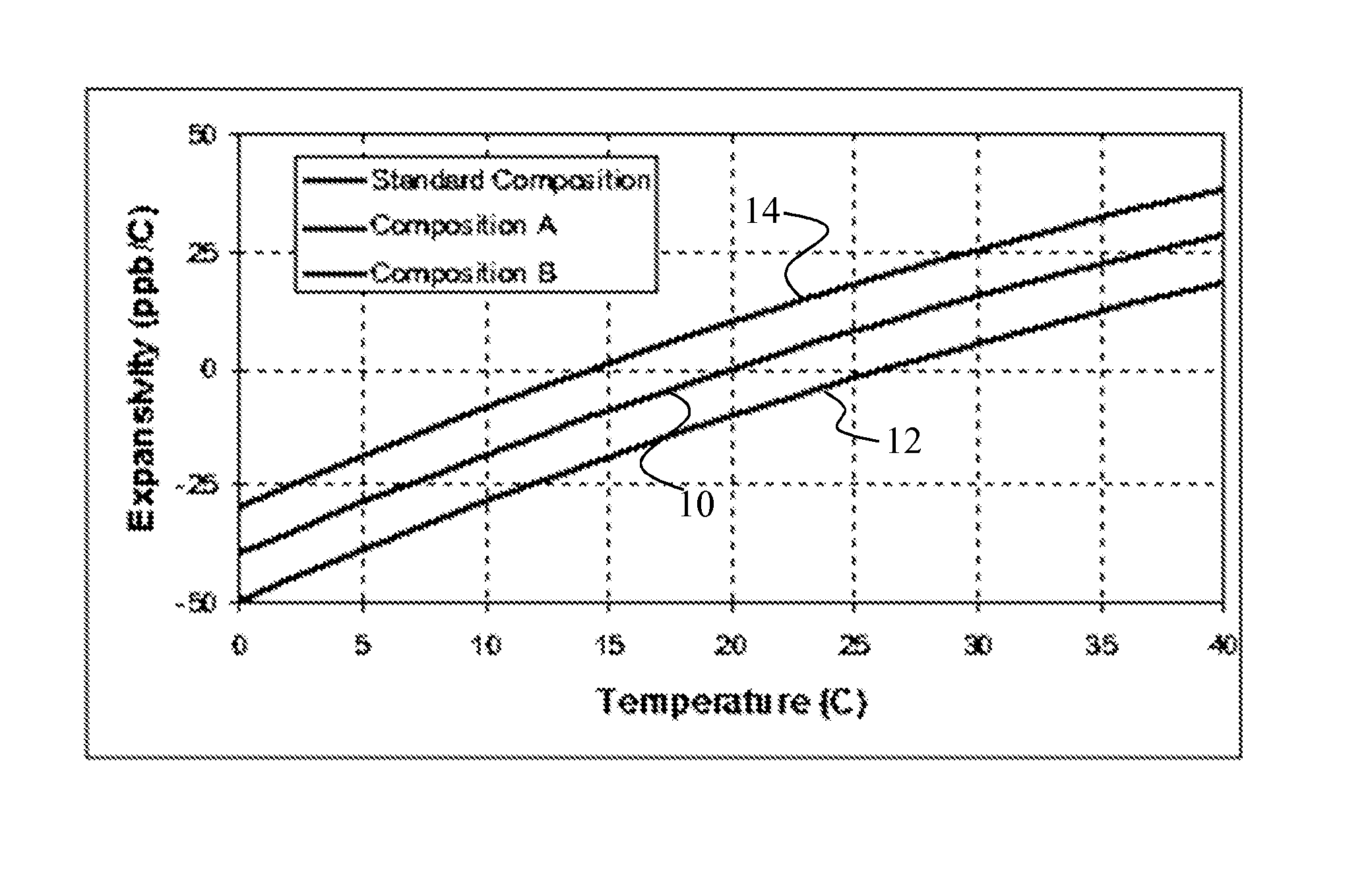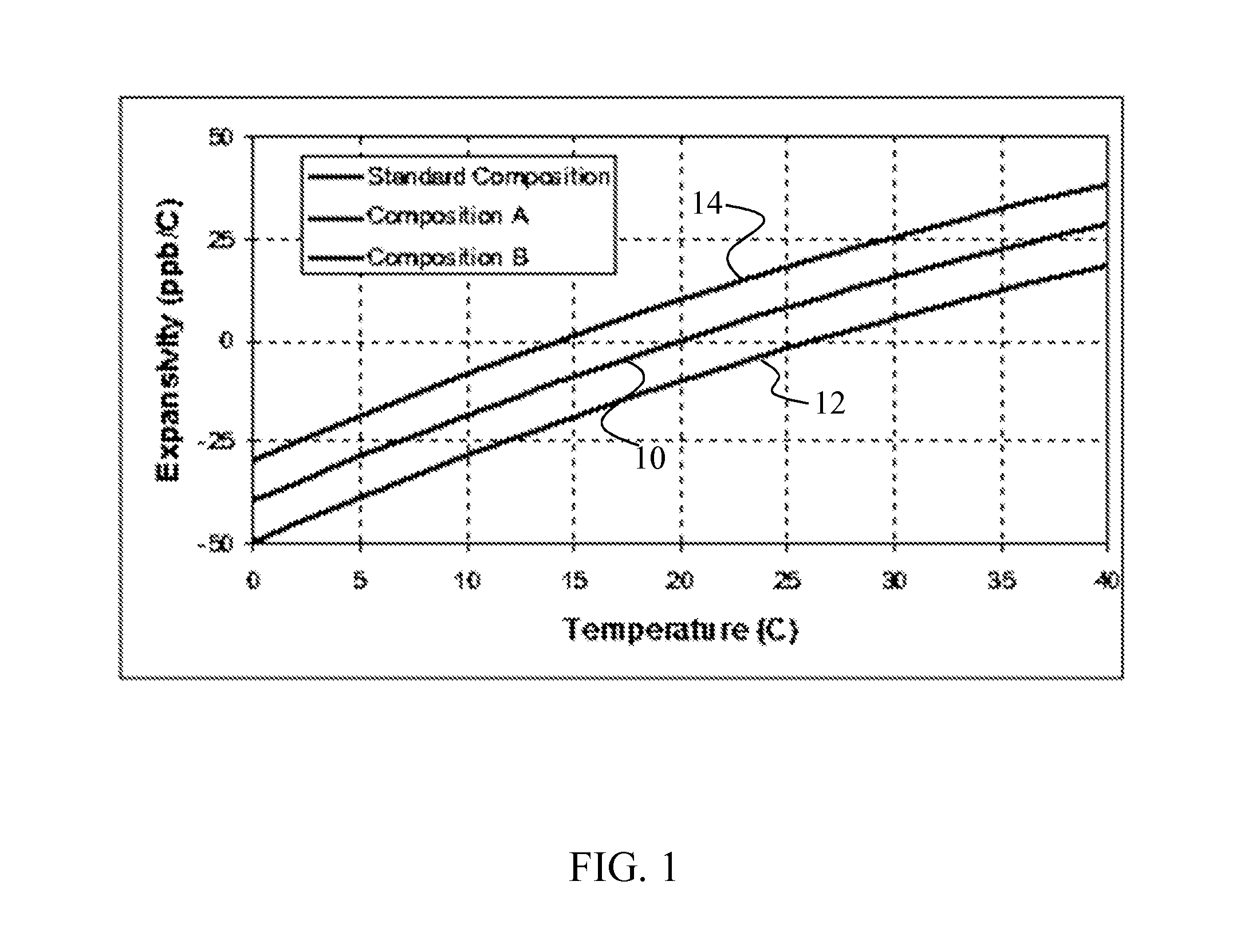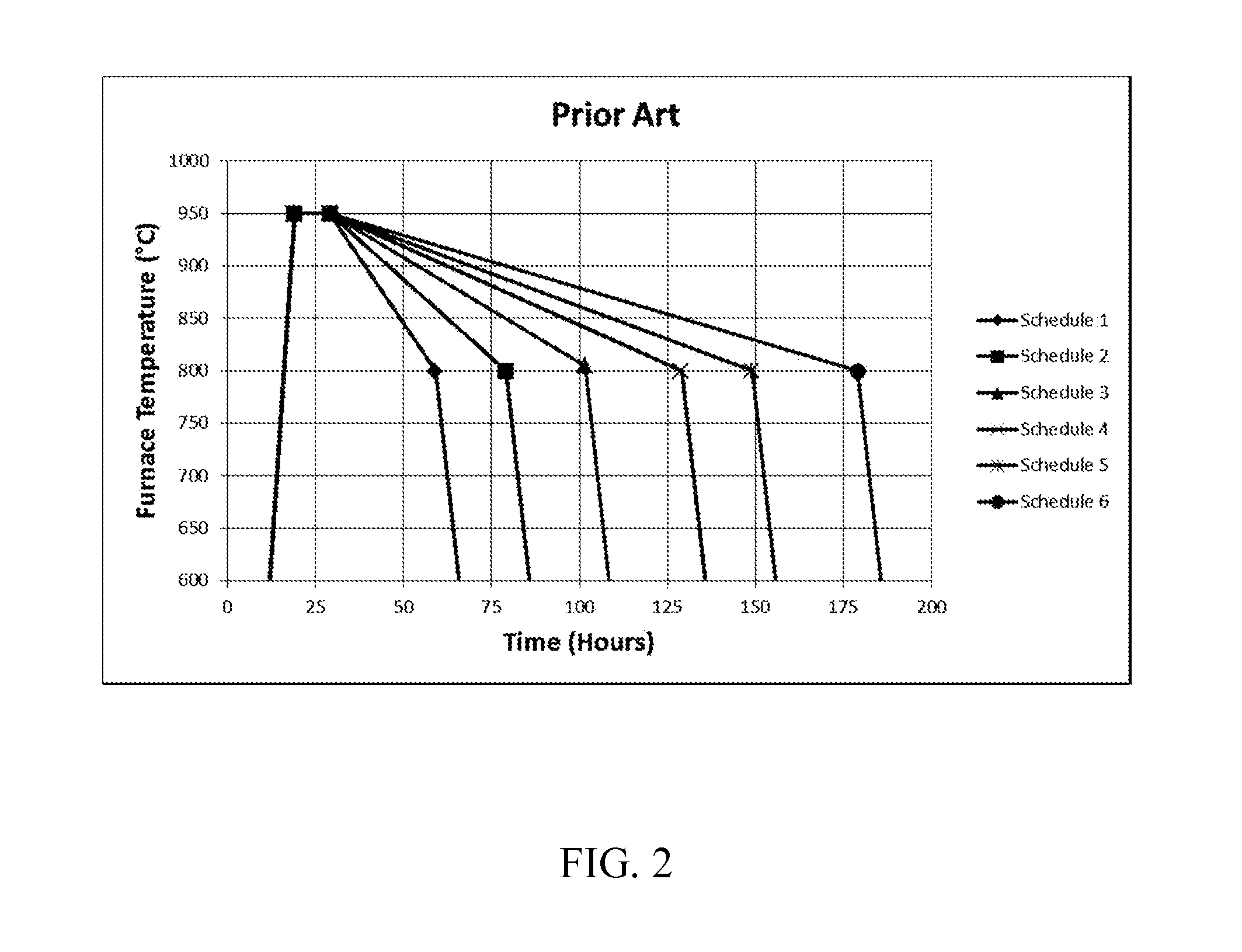Ultralow expansion glass
a technology of ultralow expansion and glass, applied in the field of ultralow expansion glass, can solve the problems of slow relaxation glass, inconvenient, expensive, time-consuming, etc., and achieve the effect of slow relaxation
- Summary
- Abstract
- Description
- Claims
- Application Information
AI Technical Summary
Problems solved by technology
Method used
Image
Examples
example 1
[0124]FIG. 6 illustrates representative annealing schedules in accordance with the present disclosure. Six annealing schedules are depicted. Each annealing schedule includes heating to an elevated temperature of 950° C. and holding at 950° C. for several hours. Annealing schedules 1-3 include a common rate of cooling from 950° C. to an intermediate temperature of 825° C. and differ in the rate of cooling from 825° C. to an annealing endpoint temperature of 700° C. Annealing schedules 4-6 include a common rate of cooling from 950° C. to an intermediate temperature of 825° C. and differ in the rate of cooling from 825° C. to an annealing endpoint temperature of 700° C. The rate of cooling between 950° C. and 825° C. differs for annealing schedules 1-3 and annealing schedules 4-6. The cooling rate below 700° C. to room temperature is the same for annealing schedules 1-6.
[0125]Although not explicitly shown, several additional annealing schedules of the type shown in FIG. 6 were devised ...
example 2
[0132]FIG. 8 shows alternative annealing schedules that permit independent control of Tzc and CTE slope. Six representative annealing schedules are shown. Each annealing schedule includes heating to an elevated temperature of 950° C. and holding at 950° C. for several hours. Annealing schedules 1-3 include a common rate of cooling from 950° C. to different intermediate temperatures (˜860° C., ˜825° C., and ˜780° C.) followed by cooling at a common faster rate to room temperature. Annealing schedules 4-6 include a common rate of cooling (different from the rate of cooling used for annealing schedules 1-3) from 950° C. to different intermediate temperatures (˜855° C., ˜815° C., and ˜770° C.) followed by cooling at a common faster rate (the same faster rate as used in annealing schedules 1-3) to room temperature.
[0133]The common rate of cooling from the elevated temperature for annealing schedules 1-3 shown in FIG. 8 is expected to establish a common fictive temperature and a common CT...
PUM
| Property | Measurement | Unit |
|---|---|---|
| fictive temperature | aaaaa | aaaaa |
| temperature | aaaaa | aaaaa |
| fictive temperature | aaaaa | aaaaa |
Abstract
Description
Claims
Application Information
 Login to View More
Login to View More - R&D
- Intellectual Property
- Life Sciences
- Materials
- Tech Scout
- Unparalleled Data Quality
- Higher Quality Content
- 60% Fewer Hallucinations
Browse by: Latest US Patents, China's latest patents, Technical Efficacy Thesaurus, Application Domain, Technology Topic, Popular Technical Reports.
© 2025 PatSnap. All rights reserved.Legal|Privacy policy|Modern Slavery Act Transparency Statement|Sitemap|About US| Contact US: help@patsnap.com



